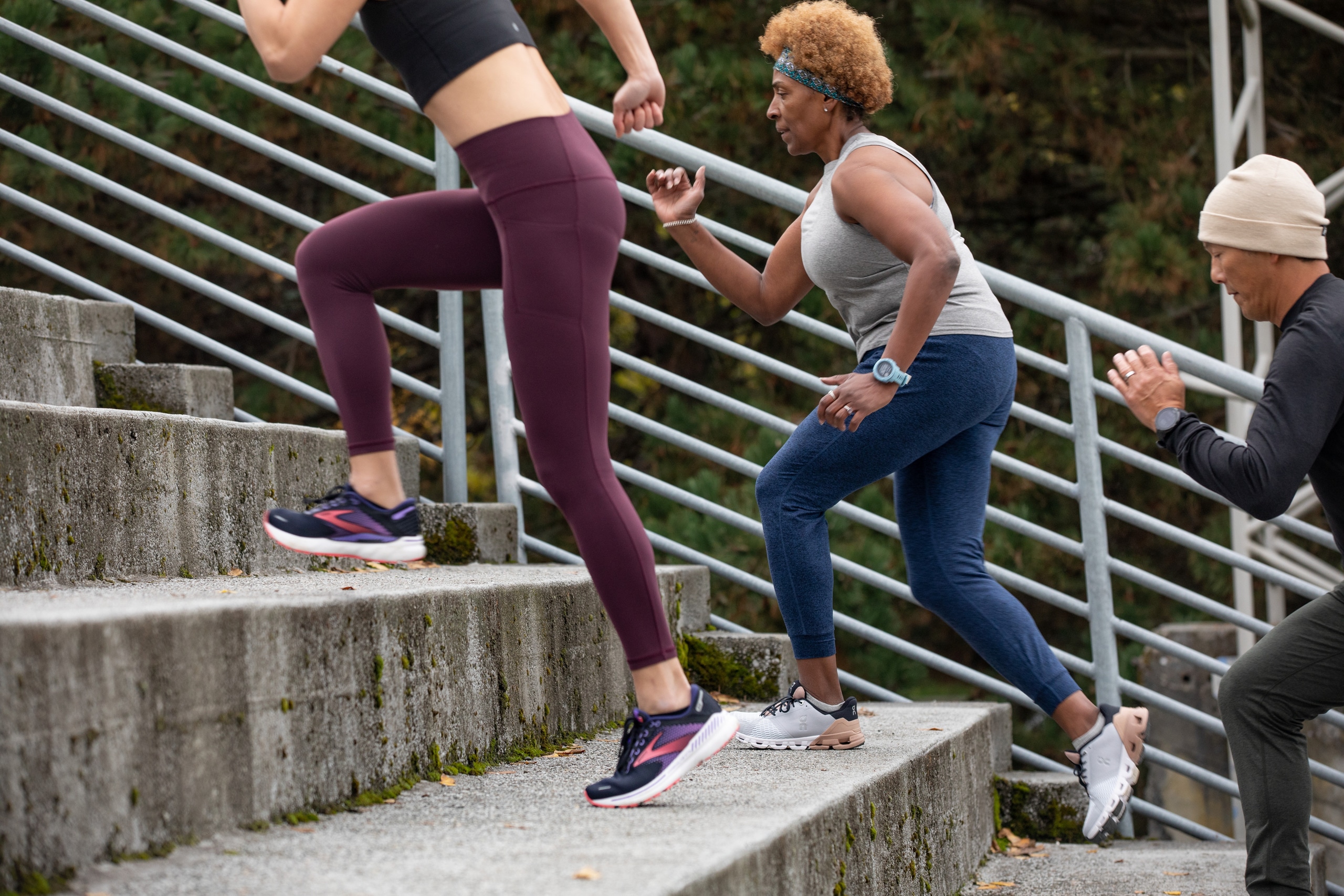If you enjoy running, hiking, cross-country skiing or another form of cardio, you may have come across the term VO2 max. Maybe you find yourself doing cardiovascular activities quite regularly but are stumped on the significance of VO2 max and what it means.
Let's start with how respiration works in the human body: When you breathe, you inhale a combination of nitrogen, oxygen and other gasses into your lungs. Your capillaries absorb the oxygen and, with an exhale out of your lungs, you dispose of carbon dioxide. Not only does this air exchange help us sustain life, it's also critical in providing us with energy for the activities we love to do.
Now that we have a clear understanding of how the respiratory process works, let's dive into VO2 max. In this guide, we'll highlight:
- What Is VO2 max?
- Why Is VO2 max important?
- How to measure your VO2 max
- What's a "good" VO2 max to aim for?
What is VO2 Max?
Your VO2 max is the maximum amount of oxygen your body can use during intense exercise. VO2 max is sometimes called oxygen uptake. Key factors that influence VO2 max include genetics, age, sex, training status and overall cardiovascular health.
Why is VO2 Max Important?
VO2 max is influenced by three bodily systems: the respiratory system, which takes in oxygen from the air; the circulatory system, which delivers oxygenated blood to your muscles; and the muscular system, which uses oxygen to create energy. A higher VO2 max—influenced by these three systems—indicates a greater aerobic capacity, according to Malcolm Dunn, previously an REI Experiences operations coordinator with a master's degree in kinesiology. The capacities of these systems influence your fitness level and serve as indicators of overall health and longevity.
How to Measure Your VO2 Max
A VO2 max test can be performed at a sports medicine facility or lab that performs stress tests to evaluate heart health. Some gyms and even fitness trackers can help you conduct what's known as a submaximal test that doesn't require an all-out effort and can offer you a rough VO2 max score. But beware that submaximal tests aren't as rigorous as what's done in a lab setting. "The lab is the gold standard and the most accurate way to calculate your VO2 max," Dunn said, "All other estimates are just that—estimates." To learn more about how to measure and improve your VO2 max, read our previous coverage.
What's a "good" VO2 max to aim for?
Achieving a "good" VO2 max can be somewhat subjective as this number varies depending on age, gender, fitness level and other factors. There's no "correct" or "typical" number. The table below is a generally accepted scale without accounting much for age (after 30, there tends to be a 5 to 10% decrease in VO2 max every decade). VO2 max is measured in milliliters of oxygen consumed in a minute per kilogram of body weight (mL/kg/min).
- Elite: Men: 70+ mL/kg/min, Women: 60+ mL/kg/min
- Excellent: Men: 60+ mL/kg/ming, Women: 50+ mL/kg/min
- Good: Men: 50-59 mL/kg/min, Women: 40-49 mL/kg/min
- Average: Men: 40-49 mL/kg/min, Women: 30-39 mL/kg/min
- Below Average: Men: 30-39 mL/kg/min, Women: 20-29 mL/kg/min
- Poor: Men: below 30 mL/kg/min, Women: below 20 mL/kg/min
Aerobic activities like cross-country skiing, running, cycling and rowing require you to take in a lot of oxygen. If you have a high VO2 max, then, you have a higher potential to perform well during aerobic activities, Dunn said.
Increasing your VO2 Max doesn't mean you'll necessarily get faster at your chosen activity. But it can make it feel easier to reach and maintain a competitive pace. For more ideas on how to boost your VO2 max, read How to Measure and Improve your VO2 Max.


